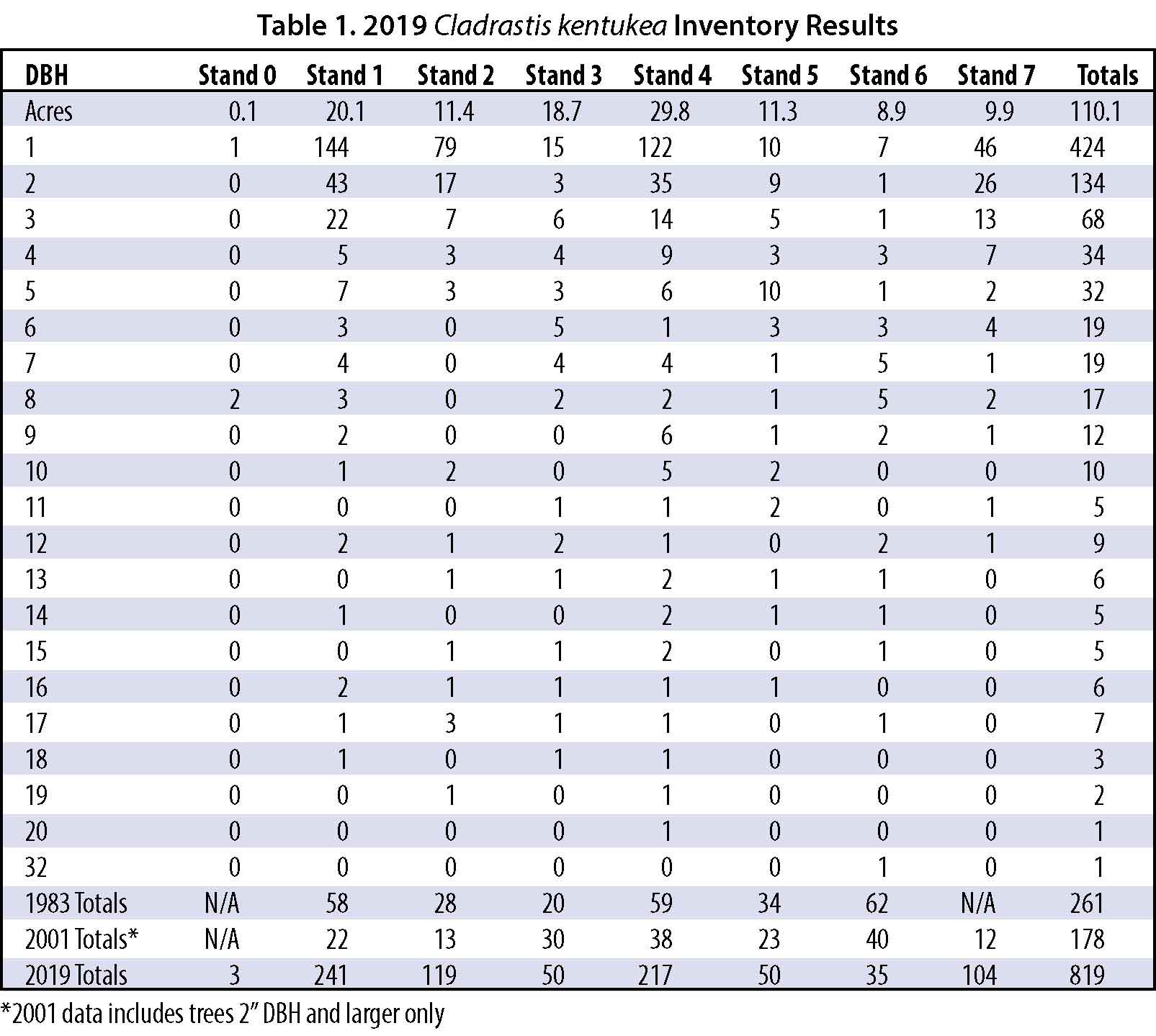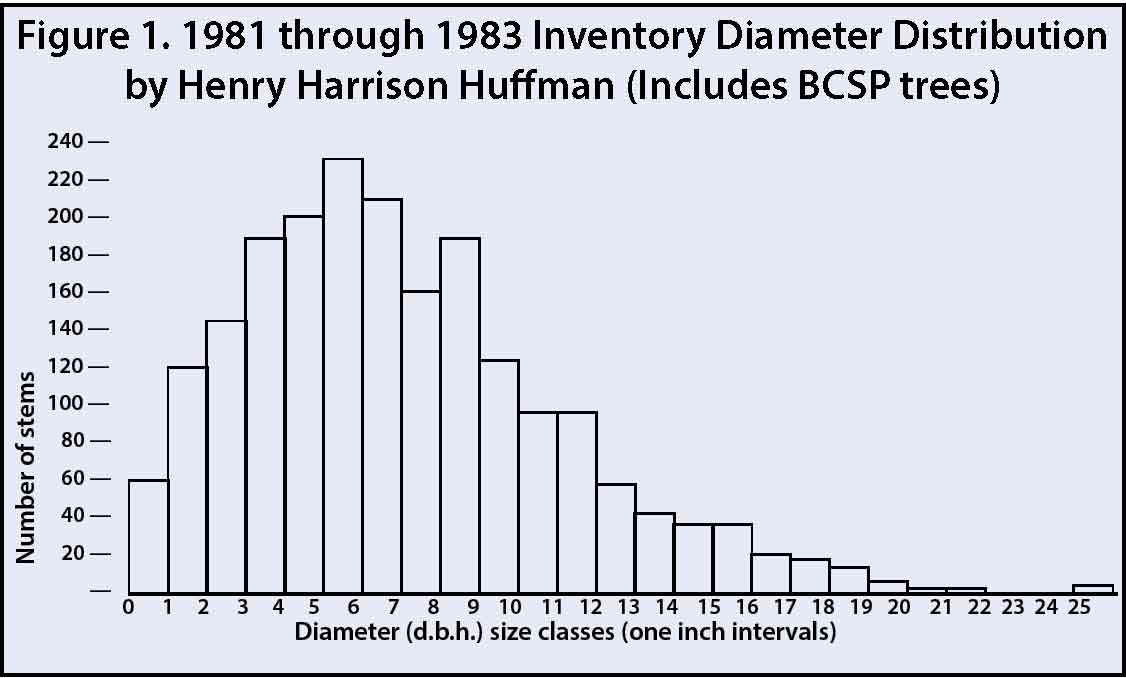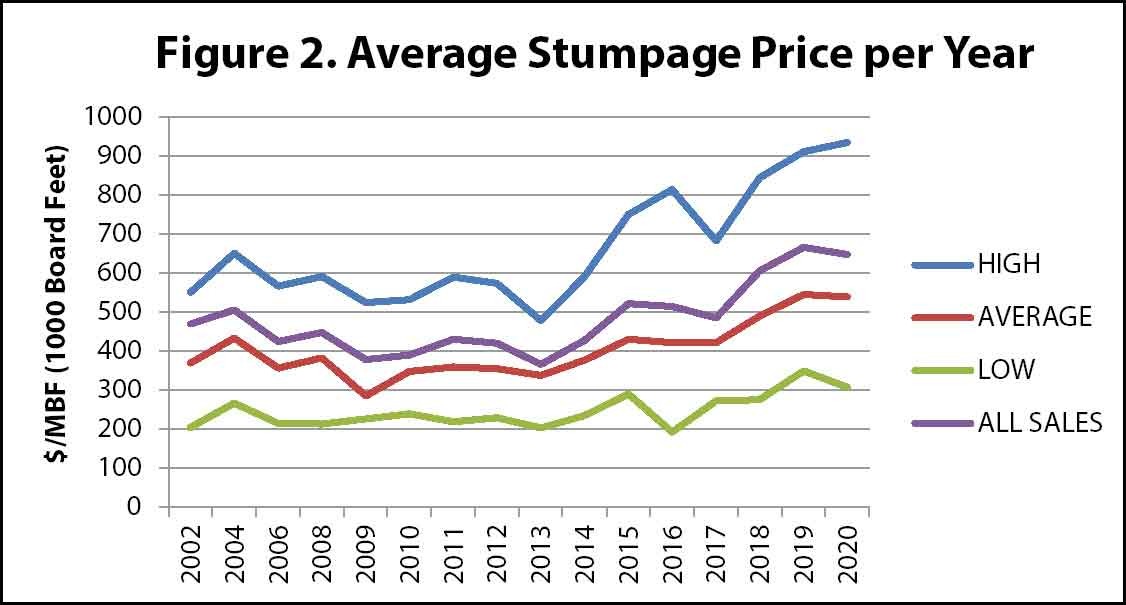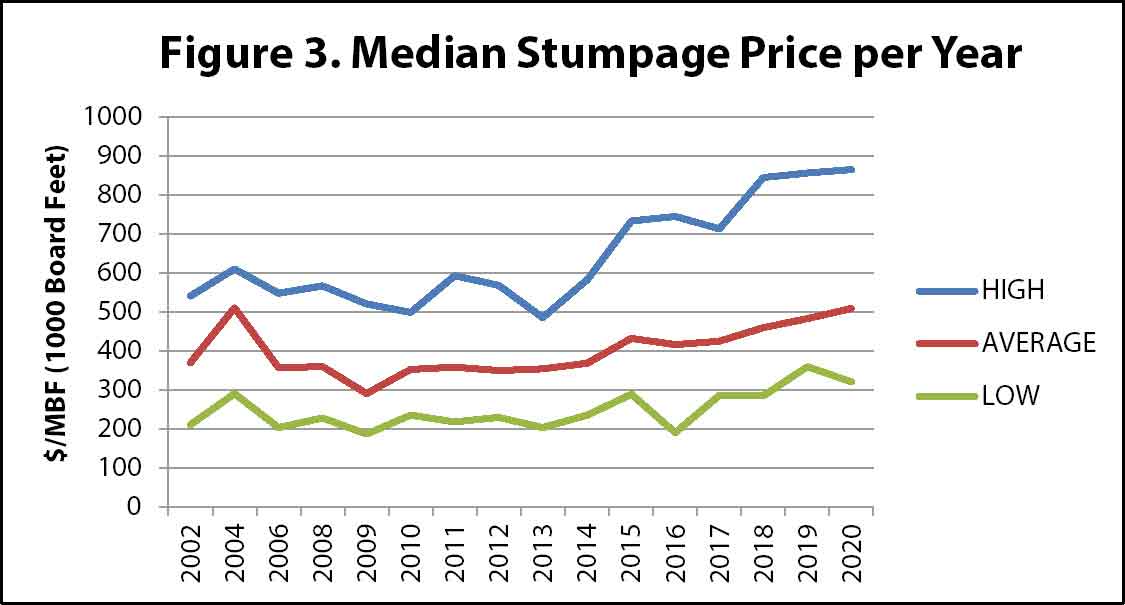Yellowwood Cladrastis kentukea Restoration and Recovery at Yellowwood State Forest
Yellowwood is the only tree species within the genus Cladrastis in the United States. It was discovered in March 1796 by Andre Michaux near Fleen’s Creek, 12 miles from Fort Blount, which is on the north bank of the Cumberland River near the present town of Gainesboro, TN. Two Civilian Conservation Corps workers were the first to discover yellowwood in Indiana. The discovery was at the Brown County Game Preserve (Brown County State Park). Purdue University extension forester T.E. Shaw reported the discovery to Charles Deam, and the two of them collected specimens on August 18, 1933 (Deam 1934) The southwestern most locations of yellowwood trees (stands 1 and 2) were the origin of the name for Yellowwood State Forest (Huffman 1984, 1986).
The Indiana populations of yellowwood are the northernmost in its entire range. While the entire range of Yellowwood consists of several disjunct areas, the Indiana population is quite small and separated from other larger areas, such as those found in the Ozarks, Kentucky, and Tennessee. A DNA study was conducted by the Hardwood Tree Improvement and Regeneration Center at Purdue University at the request of The Nature Conservancy. This study compared samples from Indiana, Missouri, Arkansas, and Kentucky. The results indicated that these populations are independent relicts, essentially ruling out the possibility that the Indiana population was somehow introduced by early settlers to Brown County from another area where yellowwood is native. Even the separate stands of yellowwoods within the Brown County population were genetically different.
Yellowwood is a shade intolerant species and will seed into open areas when a seed crop is available and a good seed bed is near to the seed source. Yellowwoods develop extensive root systems and are prolific sprouters. The extensive root systems of seedlings and saplings, shade intolerance, and ability to sprout prolifically are all very similar to strategies used by oaks and hickories for regeneration and recruitment.

 Inventory
Inventory
The current inventory of yellowwood trees was completed on September 10, 2019. This inventory attempted to locate, measure, and GPS every yellowwood tree known to exist at Yellowwood State Forest. It is entirely possible that some were missed inside inventoried areas and that others may exist outside these areas. An effort was made to search well outside the limits of the stands to ensure the extent of each stand was found. Future efforts will look to expand the search to other areas as well as continue to look for them during routine tract inventories and other work done in Compartment 3 of Yellowwood State Forest. A summary of the inventory results are located below.
Next Steps
Given that yellowwood trees develop extensive, deep root systems, are extensive sprouters, and require abundant sunlight, several techniques can be used to restore the yellowwood population at Yellowwood State Forest. The known growth habits of yellowwood in addition to observations from the field show that it performs well under the same conditions as oaks and hickories.
• Yellowwood trees 4” DBH and greater in mature stands should be released from competition on one to four sides immediately through forest stand improvement techniques to ensure adequate sunlight for both tree health and flower/seed production.
• Saplings and poles in mature forest settings should be immediately released on 2 to 4 sides. Nearly all of the trees in this position are suppressed, primarily by beech but also sugar maple, red maple, et. al.
• Yellowwood sapling through pole sized trees present in non-native pine stands should immediately have all the competing trees in the understory and midstory removed. As time allows, the planted white pine overstory should be harvested to fully release the trees from competition and remove any risk of wind storms smashing the existing yellowwoods. Whether during a harvest or a wind event, the potential still exists for some of the trees to be damaged. If any are, they should be coppiced and allowed to sprout prolifically as they are prone to do. These areas will then need to be re-entered on approximately 10 year intervals to perform release work to ensure the trees remain free to grow.
• Single-tree and group selection harvesting should continue throughout the yellowwood stands as silviculturally appropriate for the many other native species in this compartment. During these harvests, opportunities should be taken to release all yellowwoods from competition to ensure vigorous growth and high flower/seed production. Yellowwoods, like oaks and hickories, are most likely to be successful in moderate to large regeneration openings, if advanced regeneration is present and periodic release work is performed to keep them competitive. In the case where regeneration openings are silviculturally appropriate for other reasons, but advanced yellowwood regeneration is not present, monitoring should continue during subsequent intermediate thinnings and release work in the openings to watch for any yellowwoods that may have grown in.
• Midstory and understory removal forest stand improvement should also be conducted in and around the stands of yellowwoods in order to begin developing new seedlings and saplings for future tree recruitment and expansion of the stands.
• A shelterwood system that incorporates midstory and understory removal of competing vegetation, overstory thinnings, and eventual overstory removal should be used to benefit yellowwood trees as well as oaks and hickories.
• While yellowwood is a thin-barked tree that can be injured by fire, prescribed fire could potentially be used a tool to assist with regeneration. Yellowwood seeds need mineral soil contact, and prescribed fire could be used to reduce leaf litter to assist with this. Also, as stated elsewhere in this guide, yellowwood trees tend to develop in the same way as oaks and hickories. Open understories maintained by fire would allow for these conditions. If prescribed fire is implemented as a tool for yellowwood regeneration, existing trees should have the leaves blown away from them to prevent damage from fire.
• Connectivity of the stands is already occurring with many of the stands on the southern end of the yellowwoods; however, there is a large gap between the northern and southern stands. Collecting seeds from trees and growing seedlings for outplanting is an option. The trees have not been flowering or producing many seeds though due to heavy crown and shade competition from adjacent trees. This seed supply may become more available as the trees are released from competition and able to produce more seed. Transplanting existing seedlings is a possibility as well and should be considered in the future.
Regardless of the techniques employed, foresters now and through the future should be flexible and use adaptive management to apply the best known silviculture possible at the time to promote the yellowwood population and maximize the retention of those with healthy crowns through active management.
Michael Spaulding is a Resource Supervisor with the IDNR Division of Forestry.
